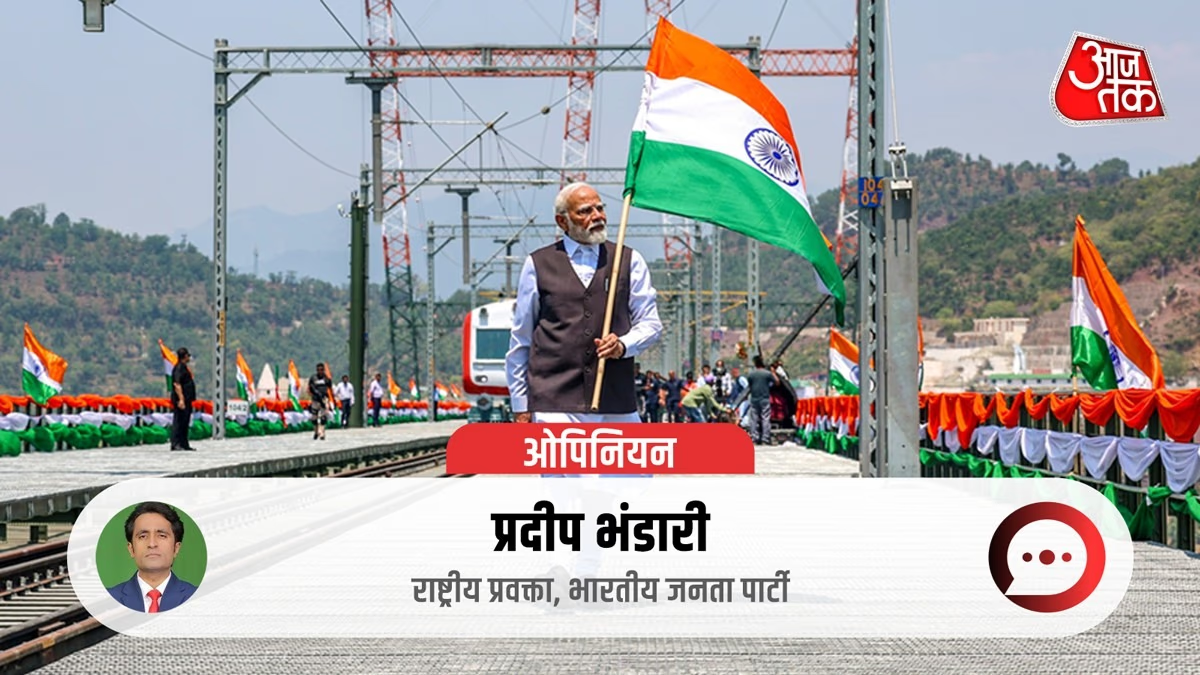On June 9, 2024, when Prime Minister Narendra Modi took oath for his unprecedented third consecutive term, it marked not only a historical milestone but shattered every political myth the opposition had nurtured over the past decade. In a post-COVID world where no major global leader managed a comeback, Modi not only triumphed but remained invincible and steadfast. In a country where no Prime Minister in the last 50 years succeeded in serving three consecutive terms, people once again placed their unwavering trust in one man—Narendra Modi. Under Modi's third government, India's internal and external security witnessed a significant transformation. The days of responding to terrorism with dossiers and diplomatic notes are over now.
Today, terrorism is dealt with strategic precision and tremendous force. The world witnessed how Operation Sindoor redefined India's war doctrine. Nine cross-border terrorist hubs, responsible for terrorist attacks over the past 25 years in India and abroad, were decimated, and over 100 terrorists were eliminated. It was not merely retribution for the Pahalgam attack; it signified a clear shift in India's war doctrine: any act of terrorism is now considered an act of war. This shift in wartime policy was further bolstered by the deployment of indigenous defense systems like Akashtir—symbolizing India's growing military self-reliance.
Defense exports, which were worth ₹686 crore in 2013, surpassed ₹23,000 crore by 2025, with over 90 countries now leveraging India's defense technology. India has transformed from a mere defender to a global supplier of security. Coupled with these defense achievements are significant economic milestones. What previous governments promised for 2047, Modi 3.0 accomplished by 2025. India is now a $4 trillion economy—the fourth-largest globally. This achievement underscores that with vision and resolve, goals can be achieved faster and ahead of deadlines.
Foreign exchange reserves have surged to $700 billion, reflecting India's robust financial standing. The Purchasing Managers’ Index (PMI) reached a 10-month high, indicating strong industrial growth. In a move that astonished critics and delighted the populace, the government made income up to ₹12 lakhs tax-free—a historic relief for the Indian middle class. This decision fueled a surge in consumption, savings, and investments. This burgeoning economic strength translated into unprecedented political success. One state after another saw the BJP-led NDA dismantle long-standing political strongholds, rewriting electoral history. All elections were fought and won under the leadership of Prime Minister Modi.
In Maharashtra, the BJP-led alliance secured over 79% of assembly seats, solidifying its hold on India’s industrial hub. An unprecedented victory in Haryana saw the party forming a government for the third consecutive time. Perhaps the most symbolic triumph was in Delhi, where the BJP returned to power after 27 years, upending decades of populism, freebies, and false promises. These victories were not isolated regional successes—they were a unified national endorsement of Modi’s leadership. These elections were fought in Modi’s name, reaffirming the people's trust by re-electing the BJP.
The Modi government also showcased its political might by passing some of the contemporary era's most controversial bills in both houses of Parliament with absolute authority and without disruption. The Waqf Amendment Bill, long smothered under layers of political appeasement, was decisively implemented to restore land rights and dignity to neglected Muslim communities, especially women, ending decades of injustice. With the bold announcement of a nationwide caste census alongside the general one, Modi 3.0 shattered the status quo. While previous governments only used caste censuses as electoral tactics, this administration adopted them as powerful instruments for data-driven governance, evidence-based policymaking, and true social empowerment.
In a move toward long-term reform, a significant step was taken when the cabinet approved the long-pending One Nation, One Election proposal. This long-awaited reform promises to end policy deadlocks, reduce election costs, and ensure seamless governance across the nation. Only a government with political will and long-term vision could propel this forward. The story of India’s internal security is equally remarkable. Once infamous as a bastion of left-wing insurgency, Bastar is now almost free from Naxalite terror. Through a combination of precise operations, development, and inclusive governance, the government has broken the backbone of the Red Corridor. The promise to make India completely free of Naxalism is no longer a slogan—it's rapidly becoming a reality. The number of districts affected by left-wing extremism fell from 126 in April 2018 to 90, then to 70 in July 2021, and further down to 38 in April 2024. Among the total Naxalism-affected districts, the number of highly affected ones has dropped from 12 to 6.
Infrastructure projects also narrate a tale of change. From the strategic Vadhavan port to the ambitious Polavaram project, from the engineering marvel of the world's highest railway bridge—Chenab Bridge—to the Z-Morh Tunnel enhancing border connectivity, India is witnessing its most significant and integrated infrastructure revolution since its independence. These are not mere construction efforts—they are milestones in nation-building. PM Modi’s tenure represents not just a continuation of the BJP-led NDA government but a new milestone in India’s journey. Modi 3.0 is resolute, quick to act, and increasingly ambitious. With unmatched political capital, global credibility, and unwavering public support, this government is rewriting the rules of governance, redefining national security, and reimagining India’s future.
Some opposition leaders claimed Modi 3.0 would not keep pace with his past tenure. Yet, the PM Modi 3.0 government emerges as a spectacular mandate for a strong, bold, and rising India, proving opposition leaders wrong. With bold reforms and a new national agenda, this third tenure of Prime Minister Modi is not only continuing the legacy of his previous two terms but accelerating it, reaffirming his enduring leadership faith among people.




